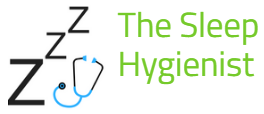Sleep Apnea
Sleep apnea is a disorder wherein you stop breathing during the night.
Sleep apnea comes in two forms, obstructive and central. Obstructive sleep apnea (OSA) is commonly used to refer to all types of this disruptive nighttime condition. However, it is clinically diagnosed as different than central sleep apnea (CSA). For at least 20% of all sleep apnea sufferers, CSA is the culprit.
This means that OSA is the more common type of sleep apnea. If you are an overweight male, and you suffer from headaches and fatigue, those symptoms and risk factors are common to both types of sleep apnea. However, the causes and treatments of each can be very different.
Understanding the More Common Obstructive Sleep Apnea
OSA accounts for about 80% of all sleep apnea cases. This is what happens. Certain muscles in your throat relax while you sleep. Your airway is obstructedt in the back of your throat, sometimes even shut off completely. As you can imagine, this restricted airflow causes you to gasp and choke, disrupting healthy sleep patterns.
The best way to think about OSA is to understand it as a broken process, or a simple mechanical problem. This form of sleep apnea is commonly treated with a CPAP machine and mask, which forces pressurized air through your windpipe, fixing the "broken" problem in your airway.
The Problem with Central Sleep Apnea
If OSA can be described as a mechanical issue, CSA is a mental problem. Neurologically, something is wrong. Because this is the case, CSA can be much more problematic and dangerous. Stated in layman's terms, the CSA sufferer has a brain which fails to deliver a breathing signal while that person is asleep.
CSA victims have the ability to breathe normally. In many times they do not suffer the same symptoms as someone with OSA. They know how to breathe, but their brain intermittently forgets to tell them to breathe. While OSA can lead to problems like congestive heart failure and respiratory issues, these and other medical problems are a more serious issue when CSA has been diagnosed.
CSA can be treated by using an adaptive servo-ventilation or ASV device. This works sort of like the common CPAP usually prescribed as a treatment for OSA. Throughout the night an ASV machine measures your breathing. It then adjusts air pressure levels instantly depending on your breathing patterns. This way, when your brain forgets to signal you to breathe, the machine breathes for you.
OSA and CSA Diagnosis
You need to undergo a home sleep test, or have your sleep monitored at a clinic specifically designed to do so, to discover whether you simply have a snoring problem or some type of sleep apnea. Treatment is crucial, since both types of this aggravating and sleep-depriving breathing condition can lead to much more serious issues if left untreated. Talk to your doctor about scheduling a sleep study today, and restful nights of peaceful sleep could be right around the corner.
